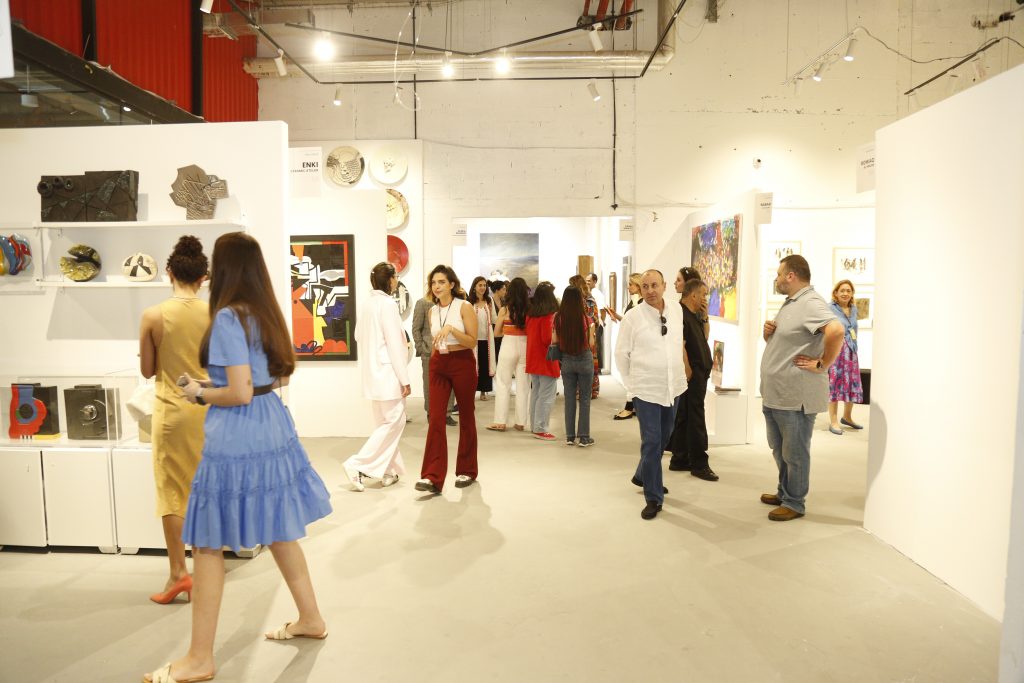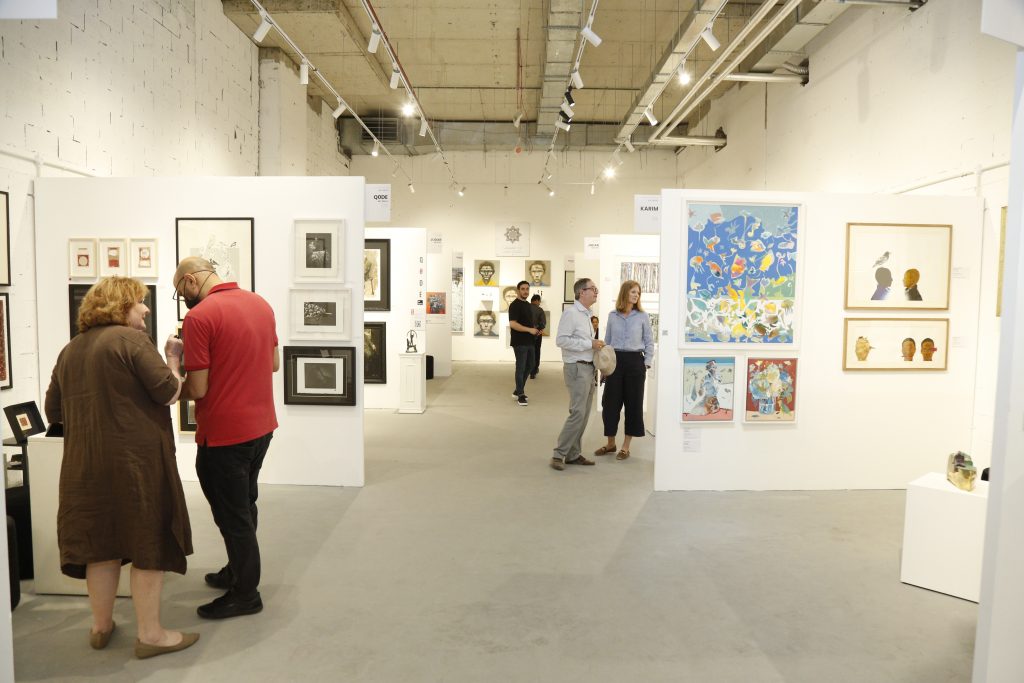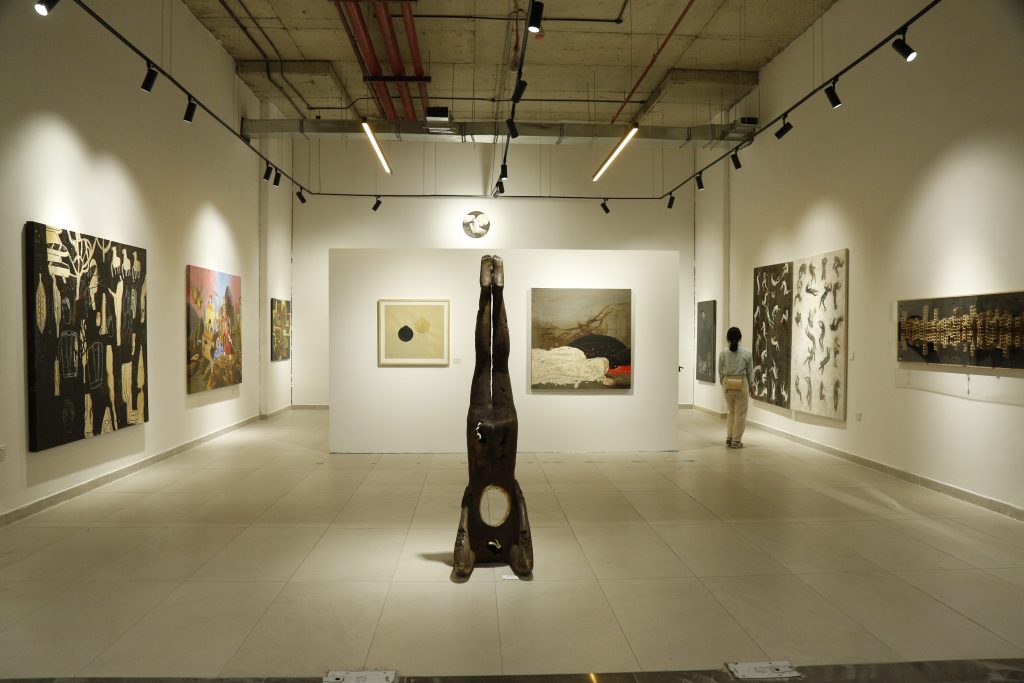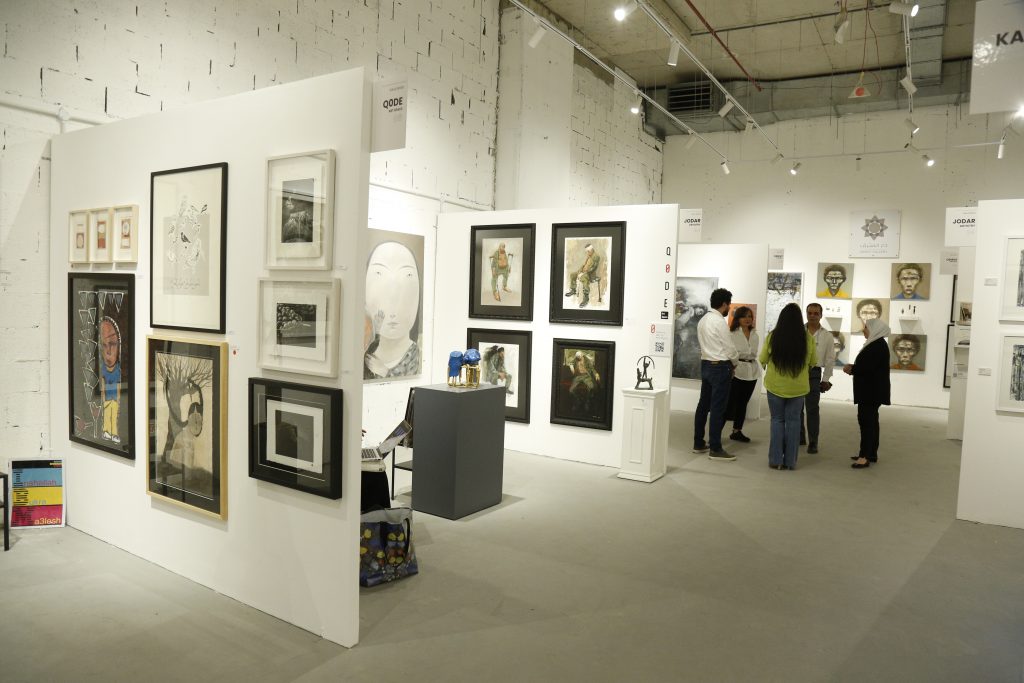Artnet News Pro
The Jordanian City of Amman, Long a Migrant Refuge, Now Has an Art Fair for Its Diasporas
The DAR Art Fair takes full advantage of Jordan's historical role as a meeting place for Middle Easterners.

The DAR Art Fair takes full advantage of Jordan's historical role as a meeting place for Middle Easterners.

Rebecca Anne Proctor

Jordan rarely makes headlines compared to the conflict-burdened nations of Syria, Iraq, Palestine, and Lebanon that surround it. If anything, in fact, its budding arts scene offers a cultural oasis in a region beset by war, violence, and social instability.
An energetic and enthusiastic crowd of art collectors, curators, and art lovers could be found perusing the halls of Swefieh Village, a new outdoor shopping mall in the capital city of Amman for the second edition of the DAR Art Fair from June 3 to 7.
Inaugurated in June 2021 by chair Dina Dabbas Rifai and event director Rania Omeish, DAR aims to foster the Arab art market regionally and internationally.
“We wanted to position ourselves as an art fair only for Arab artists, as currently this doesn’t exist in the Middle East,” Rifai told Artnet News. “We want to serve emerging and established Arab artists and act as a catalyst for their work to enter the international market.”
Other fairs in the Middle East—namely Art Dubai, the Abu Dhabi Art fair; Jeddah’s Shara Art Fair; and the Beirut Art Fair—mix regional Middle Eastern artists and galleries with international names. The Beirut fair, however, founded in 2010 by French national Laure d’Hauteville, hasn’t been staged since 2019 due to the Covid-19 pandemic and the country’s prolonged economic and political depression. (Since 2021 d’Hauteville has presented the MENART Fair in Paris dedicated to artists from the Middle East and North Africa.)
Omeish long dreamed of staging an art fair in Amman.
“We have a design fair, a dance festival, many artists from Jordan and surrounding countries, but not an art fair and I want Jordanians to appreciate the art in the region,” she told Artnet News.

An installation view of the second edition of the DAR Art Fair in the Jordanian capital city of Amman. Courtesy DAR Art fair.
Jordan’s relative political stability has served as a welcome haven for refugees and migrants from neighboring countries. For a country with a population of 10.3 million people and an influx of millions of refugees from four regional wars in just 70 years, the Hashemite Kingdom of Jordan, as it is officially called, shoulders an exceptionally large number of migrants relative to its overall population.
“Jordan is the refugee hub for all the Iraqis leaving Iraq, for all the Palestinians and Syrians that were displaced, and they come and create beautiful artwork here,” Rifai said. “They have their studios here and some have used [Jordan] as a stopping station before going to Europe or the United States, especially the Iraqis.”
Staging the fair was a groundbreaking feat for the Levantine nation, still grappling with its own refugee crisis, water scarcity (according to the UN, Jordan is the second-most water-scarce country in the world), and lack of natural resources, especially when compared to oil-rich Gulf states.
Yet the country still has a growing arts scene.
“We have so many talented, up-and-coming, and established artists in Jordan that have been overlooked over the years,” Rifai added.
Amman is not just a fair destination. It is also home to Darat Al Funun, one of the first nonprofit art galleries and residencies in the region (founded in 1988), as well as several notable galleries, including Wadi Finan Art Gallery, which is run under the patronage of Jordanian Princess and artist Wijdan Al-Hashemi.
“The Iraqi, Syrian, and also Lebanese art scenes were more advanced than the Jordanian art scene,” Jordanian businessman and collector Ousama Ghannoum, who also sits on the board of DAR, told Artnet News. “The Iraqis were the first to come to Jordan due to the situation in Iraq and then came the Syrians. When they came for work and refuge, they also began to produce art. When they exhibited in Jordanian galleries it was an eye-opener for younger Jordanian artists and helped raise the art scene in Jordan to a higher level.”
Adel Abidin, a well-known Iraqi artist based in Helsinki since the early 2000s, has long kept a studio in Amman.
“Amman became the place where I could meet my fellow Iraqi artists and have the chance to provoke creative discussions and exchange ideas,” the artist, who was showing work at the fair, told Artnet News. “Jordan has been the most supportive and welcoming country to all Iraqis since the period of sanctions in the 1990s and through the American occupation that began in March 2003.”

An installation view of the second edition of the DAR Art Fair in the Jordanian capital city of Amman. Courtesy DAR Art fair.
DAR, which included 15 galleries and presents works by artists from 22 countries, was mostly geared towards collectors spending between a few hundred dollars, up to $50,000.
Gallerists that participated in the first edition, like Jordanian Dubai-based Ghada Kunash, founder and director of Fann A Porter, returned enthusiastically.
“I didn’t hesitate to participate the first year and we sold very well to many Jordanian collectors,” Kunash told Artnet News. “Amman has so much potential as a hub for Arab artists in the region. It can easily welcome and accommodate its neighbors and foreigners.” Her booth displayed sculptures and works on canvas by Syrian artists, both emerging and established, for not more than $10,000.
Works by several renowned Arab artists were on display, including three ceramics by London-based Iraqi artist Dia Azzawi (whose works can fetch up to $235,000) at the Amman-based Enki Atelier. (The gallery is run by Delair Shaker, son of renowned Iraqi ceramicist Saad Shaker).

Several giclée prints by Lebanese artist Hussein Madi, known for his fusion of European and Islamic influences, were shown at Nabad Art Gallery from Jordan in the range of $1,500 to $8,000, and Iraqi, Beirut-based Serwan Baran showed several works for approximately $7,000 at Q0DE Art Space. The gallery also presented the mythical paintings of Babylon-based Iraqi artist Aladdin Mohammed, who describes his depictions as “mythical but contemporary beings inspired by the ancient city of Babylon.”
Elsewhere, at Hindiyeh Museum and Gallery, which was opened in 2010 in Amman by collector Sami Hindiyeh, the paintings of Palestinian artist Saleh Al Malhi were particularly poignant. One, Moral (2004), depicts an abstract scene of a woman holding a gun in one hand and a book likely to be the Qu’ran in the other, just front of Jerusalem.
DAR also presented what it termed an “Independent Artists” section: an exhibition-style area curated by Abed Al Kadiri, a Lebanese artist and curator based between Beirut and Paris, and showing a mix of sculptures, installations, paintings, and photo-based works by artists selected following an open call. Out of 380 applications, Al-Kadiri selected 58 works to exhibit.
Nearby was the fair’s first Digital Section, and NFTs undoubtedly were on display. Emergeast, an online art gallery, showed 11 works, out of which three by Iranian and Arab artists sold in a range of 0.3 ETH ($566) to 1.5 ETH ($2,830) to collectors from Jordan, Palestine, Lebanon, and Iraq.
Signs of a growing art scene in Amman can also be witnessed through numerous new galleries, as well as artists’ residencies and new non-profit institutions. In 2017, the MMAG Foundation for Arts and Culture opened. Founded by Jordanian collectors Mohammed and Mahera Abu Ghazaleh, the center has hosted 46 artists and began offering regular residencies last year to foster young creatives.
“This is the first time in Jordan I’ve seen people line up to attend an art fair,” Ghannoum, the art collector, said. “Many people who bought from the fair are young Jordanians, newly-weds and young professionals intrigued and keen to buy their first piece of art. We hope to encourage young Jordanians, Iraqis, and Syrians to start their own collections.”